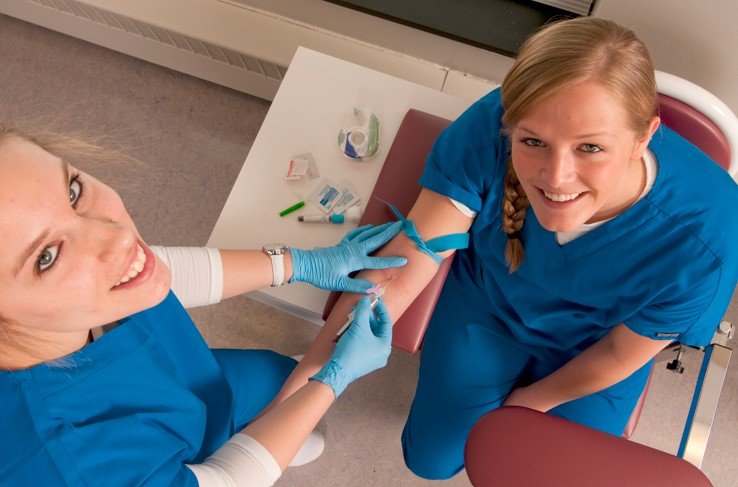Ensuring Proper Maintenance and Calibration of Sterilization Equipment in US Hospitals
Summary
- Hospitals must prioritize proper maintenance and calibration of sterilization equipment to meet regulatory requirements in the United States.
- Regular maintenance schedules and adherence to manufacturer recommendations are crucial in ensuring the effectiveness of sterilization equipment.
- Proper training of staff members on equipment use and maintenance is essential in meeting regulatory standards and ensuring patient safety.
Introduction
Hospitals across the United States are held to strict regulatory standards when it comes to the maintenance and calibration of sterilization equipment. Proper sterilization of medical devices is crucial in preventing the spread of infections and ensuring patient safety. In this blog post, we will discuss how hospitals can ensure the proper maintenance and calibration of sterilization equipment to meet regulatory requirements in the United States.
Importance of Proper Maintenance and Calibration
Proper maintenance and calibration of sterilization equipment are essential in ensuring that medical devices are effectively sterilized. Failure to maintain and calibrate equipment can result in ineffective sterilization, which can lead to an increased risk of healthcare-associated infections (HAIs) among patients. Not only does proper maintenance and calibration ensure patient safety, but it also helps hospitals comply with regulatory requirements set forth by organizations such as the Centers for Disease Control and Prevention (CDC) and the Food and Drug Administration (FDA).
Regular Maintenance Schedules
One of the key ways hospitals can ensure proper maintenance and calibration of sterilization equipment is by establishing regular maintenance schedules. These schedules should outline when each piece of equipment needs to be inspected, cleaned, and calibrated according to the manufacturer's recommendations. By adhering to these schedules, hospitals can ensure that their sterilization equipment remains in optimal working condition and effectively sterilizes medical devices.
Adherence to Manufacturer Recommendations
It is crucial for hospitals to adhere to the manufacturer's recommendations when it comes to the maintenance and calibration of sterilization equipment. Manufacturers provide detailed guidelines on how to properly maintain and calibrate their equipment to ensure optimal performance. Hospitals should strictly follow these recommendations to ensure that their sterilization equipment functions as intended and meets regulatory requirements.
Staff Training and Education
Proper training and education of staff members on the use and maintenance of sterilization equipment are paramount in meeting regulatory requirements. Hospitals should provide comprehensive training programs to staff members who operate sterilization equipment, ensuring that they understand how to use the equipment correctly and perform necessary maintenance tasks. This training not only helps ensure the effectiveness of sterilization equipment but also plays a critical role in preventing equipment misuse and errors that could compromise patient safety.
Documentation and Record-Keeping
Another important aspect of ensuring proper maintenance and calibration of sterilization equipment is proper documentation and record-keeping. Hospitals should maintain detailed records of when each piece of equipment was last inspected, cleaned, and calibrated, as well as any maintenance or repairs that were performed. This documentation serves as proof of compliance with regulatory requirements and helps hospitals track the performance of their sterilization equipment over time.
Quality Assurance and Performance Monitoring
Quality assurance and performance monitoring are essential components of maintaining sterilization equipment in hospitals. Hospitals should establish quality assurance programs that regularly assess the performance of sterilization equipment to ensure that it is effectively sterilizing medical devices. These programs may include testing the equipment using biological indicators to confirm that sterilization cycles are successful and identifying any potential issues that need to be addressed.
Collaboration with Regulatory Agencies
In order to meet regulatory requirements, hospitals should collaborate with regulatory agencies such as the CDC and FDA to ensure that their sterilization practices adhere to established guidelines. These agencies can provide valuable guidance and resources to help hospitals maintain and calibrate their sterilization equipment effectively. By working closely with regulatory agencies, hospitals can stay informed of any updates or changes to regulatory requirements and make the necessary adjustments to their practices.
Conclusion
Proper maintenance and calibration of sterilization equipment are critical in ensuring patient safety and compliance with regulatory requirements in hospitals. By establishing regular maintenance schedules, adhering to manufacturer recommendations, providing staff training and education, documenting maintenance activities, implementing quality assurance programs, and collaborating with regulatory agencies, hospitals can ensure the effectiveness of their sterilization equipment. By prioritizing the maintenance and calibration of sterilization equipment, hospitals can mitigate the risk of HAIs and uphold the highest standards of patient care.

Disclaimer: The content provided on this blog is for informational purposes only, reflecting the personal opinions and insights of the author(s) on the topics. The information provided should not be used for diagnosing or treating a health problem or disease, and those seeking personal medical advice should consult with a licensed physician. Always seek the advice of your doctor or other qualified health provider regarding a medical condition. Never disregard professional medical advice or delay in seeking it because of something you have read on this website. If you think you may have a medical emergency, call 911 or go to the nearest emergency room immediately. No physician-patient relationship is created by this web site or its use. No contributors to this web site make any representations, express or implied, with respect to the information provided herein or to its use. While we strive to share accurate and up-to-date information, we cannot guarantee the completeness, reliability, or accuracy of the content. The blog may also include links to external websites and resources for the convenience of our readers. Please note that linking to other sites does not imply endorsement of their content, practices, or services by us. Readers should use their discretion and judgment while exploring any external links and resources mentioned on this blog.
